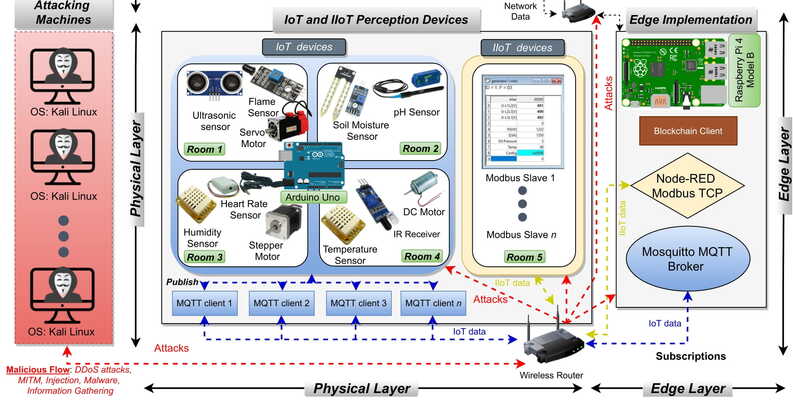Due to the significant role of Industrial Internet of Things (IIoT) in industrial systems, it often faces numerous network attacks. Therefore, intrusion detection systems are crucial for protecting real-world IIoT and driving network security solutions. However, current rule-based and machine learning-based IIoT intrusion detection systems suffer from low robustness when facing complex and dynamic network attacks.
To address these challenges, this paper proposes a novel intrusion detection model named RASNet (Residual Attention Self-learning Network), based on deep reinforcement learning. The model effectively tackles issues like gradient vanishing and exploding by introducing residual networks, thereby enhancing the representation ability for complex attack features. Additionally, the model incorporates multiple layers of attention mechanisms into convolutional neural networks, improving the feature extraction capability of convolutional blocks and capturing key information. By dynamically adjusting the weights of feature maps, the model highlights crucial information related to malicious attacks, promoting accurate classification. To handle the issues of imbalanced attack samples and adaptability to various attack types, the model introduces a self-learning mechanism. This mechanism dynamically adjusts to different data distributions and attack types, enhancing the model's adaptability and generalization capability. Through the backpropagation algorithm, the model dynamically adjusts the weights of different attack types, thereby improving the accuracy and robustness of malicious attack detection. This self-learning mechanism enables the model to accurately detect malicious attacks in the Industrial Internet of Things and enhance its robustness and reliability in various attack scenarios.
Experimental evaluations are conducted on the publicly available dataset Edge-IIoTset, which contains 14 types of attacks for comparison with control group models. The results demonstrate significant improvements in classification accuracy achieved by our proposed model, with an accuracy of 94.97% for 15-class classification. These results validate the effectiveness and robustness of our model compared to existing machine learning-based models in terms of classification performance and accuracy.
- The figure on the right is a block diagram of IIoT intrusion detection
